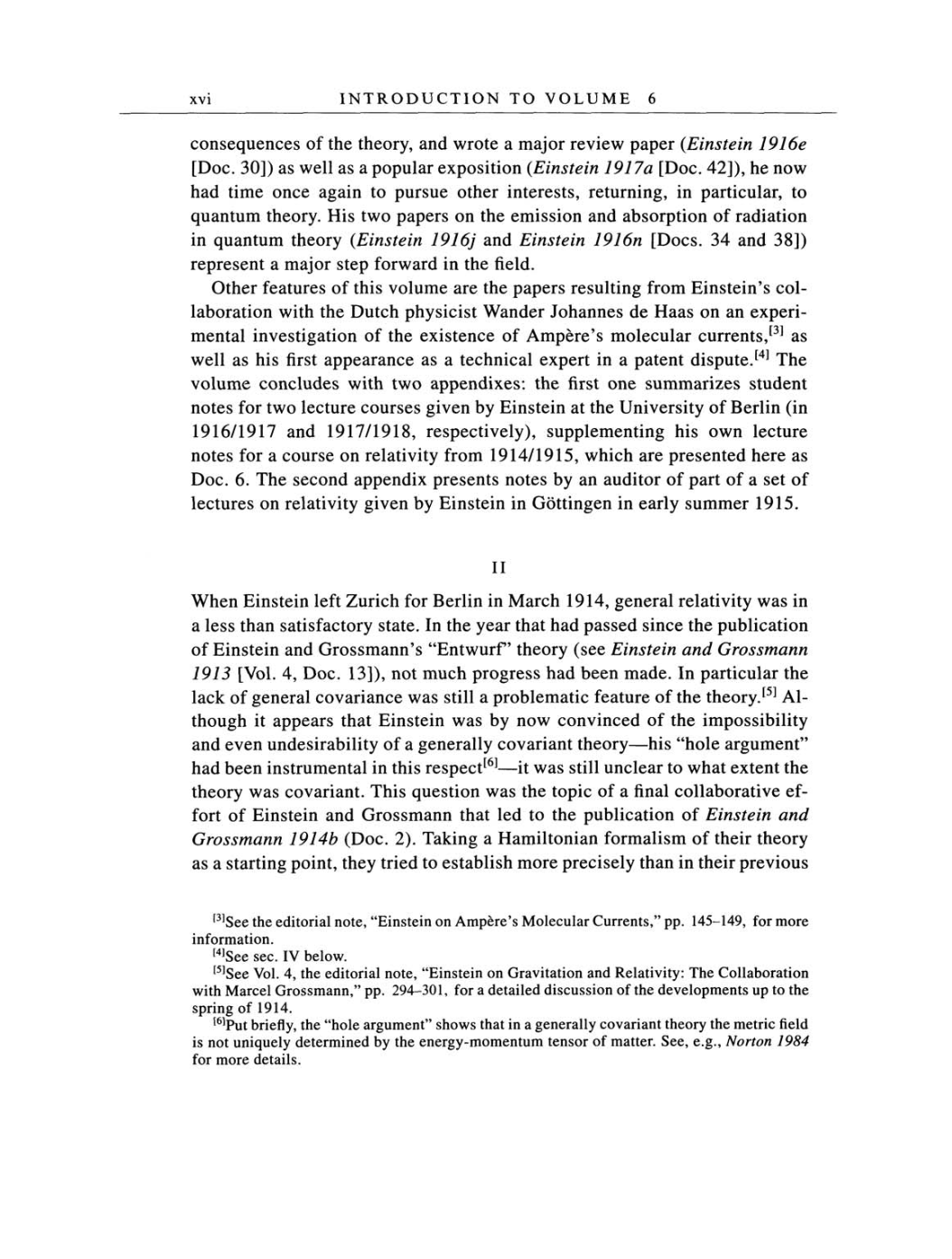xvi
INTRODUCTION
TO
VOLUME
6
consequences
of
the
theory,
and
wrote
a
major
review
paper
(Einstein
1916e
[Doc.
30])
as
well
as a
popular exposition
(Einstein
1917a
[Doc. 42]),
he
now
had time
once
again
to
pursue
other
interests,
returning,
in
particular, to
quantum theory.
His
two papers
on
the emission and
absorption
of radiation
in
quantum theory (Einstein 1916j
and Einstein 1916n
[Docs. 34
and
38])
represent
a
major step
forward in the
field.
Other features of this volume
are
the
papers resulting
from Einstein's col-
laboration with the Dutch
physicist
Wander Johannes
de
Haas
on
an
experi-
mental
investigation
of the existence of
Ampere's
molecular
currents,[3]
as
well
as
his first
appearance
as a
technical
expert
in
a
patent
dispute.[4]
The
volume concludes with
two appendixes:
the first
one
summarizes student
notes
for
two
lecture
courses
given by
Einstein
at
the
University
of Berlin
(in
1916/1917 and
1917/1918, respectively),
supplementing
his
own
lecture
notes
for
a course on
relativity
from
1914/1915,
which
are
presented
here
as
Doc.
6.
The second
appendix presents
notes
by an
auditor of
part
of
a
set
of
lectures
on relativity
given
by
Einstein
in
Göttingen
in
early summer
1915.
II
When Einstein left Zurich for Berlin in March
1914, general relativity
was
in
a
less than
satisfactory
state.
In
the
year
that
had
passed
since the
publication
of Einstein and Grossmann's
"Entwurf'
theory
(see
Einstein and Grossmann
1913
[Vol.
4,
Doc.
13]), not
much
progress
had been
made.
In
particular
the
lack of
general
covariance
was
still
a
problematic
feature
of the
theory.[5]
Al-
though
it
appears
that
Einstein
was by now
convinced of the
impossibility
and
even
undesirability
of
a
generally
covariant theory-his "hole
argument"
had been instrumental
in
this
respect[6]-it
was
still unclear
to
what
extent
the
theory
was
covariant. This
question
was
the
topic
of
a
final
collaborative ef-
fort of Einstein and Grossmann that led
to
the
publication
of Einstein and
Grossmann 1914b
(Doc.
2). Taking
a
Hamiltonian formalism of their
theory
as
a
starting point, they
tried
to
establish
more
precisely
than
in
their
previous
[3]See
the editorial
note,
"Einstein
on
Ampere's
Molecular
Currents,"
pp. 145-149,
for
more
information.
[4]See
sec.
IV
below.
[5]See
Vol.
4,
the editorial
note,
"Einstein
on
Gravitation and
Relativity:
The Collaboration
with Marcel
Grossmann,"
pp.
294-301,
for
a
detailed discussion of
the
developments
up
to
the
spring
of
1914.
[6]Put briefly,
the "hole
argument"
shows that
in
a
generally
covariant
theory
the metric field
is
not uniquely
determined
by
the
energy-momentum
tensor
of
matter. See,
e.g.,
Norton 1984
for
more
details.
